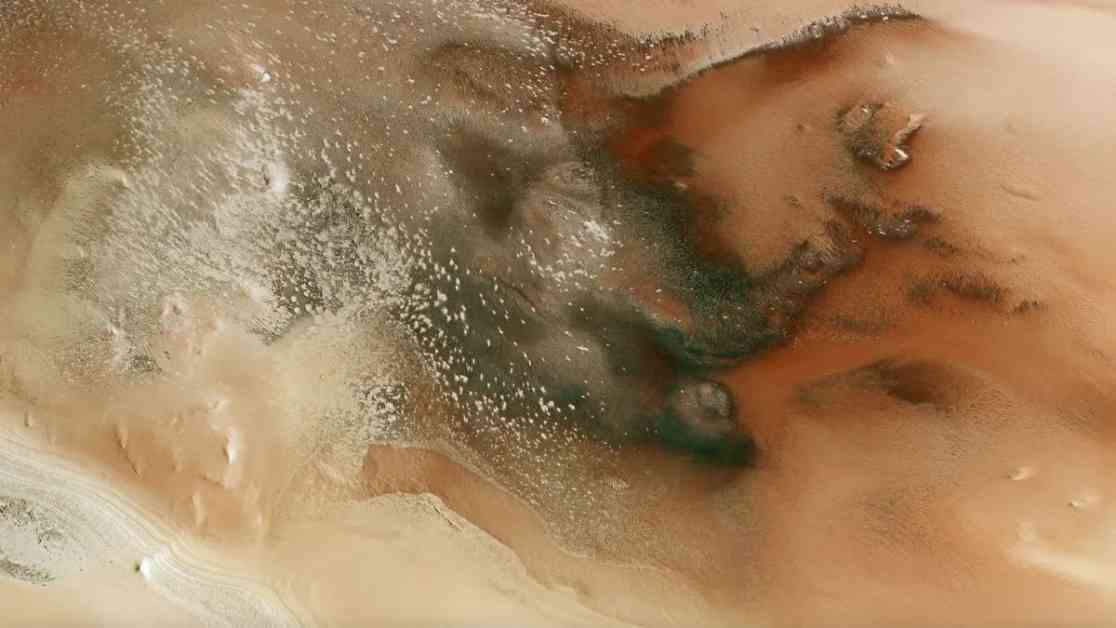Mars Express orbiter recently captured images of the Australe Scopuli region on Mars, revealing mysterious surface features as the ice cap melts during spring. The images show a mix of carbon dioxide and water ice, with some areas surprisingly dark compared to their icy surroundings.
The freeze-thaw cycle on Mars creates unique surface features like frost-fringed polygons and fan-shaped deposits. The dark dust trapped in the ice absorbs sunlight, causing it to melt faster and sink through the ice. These features provide valuable insights into Mars’ climate history.
In addition to Mars Express, ESA’s Trace Gas Orbiter also observed similar landforms in a different area of Mars’ southern hemisphere. The high-resolution images offer a close-up view of the frost-fringed polygons and other surface features.
Studying these icy features on Mars can help scientists unravel the planet’s climate history and understand the processes shaping its surface. The images captured by the European Mars orbiters provide a fascinating glimpse into the mysterious terrain of Mars’ icy south pole region.










